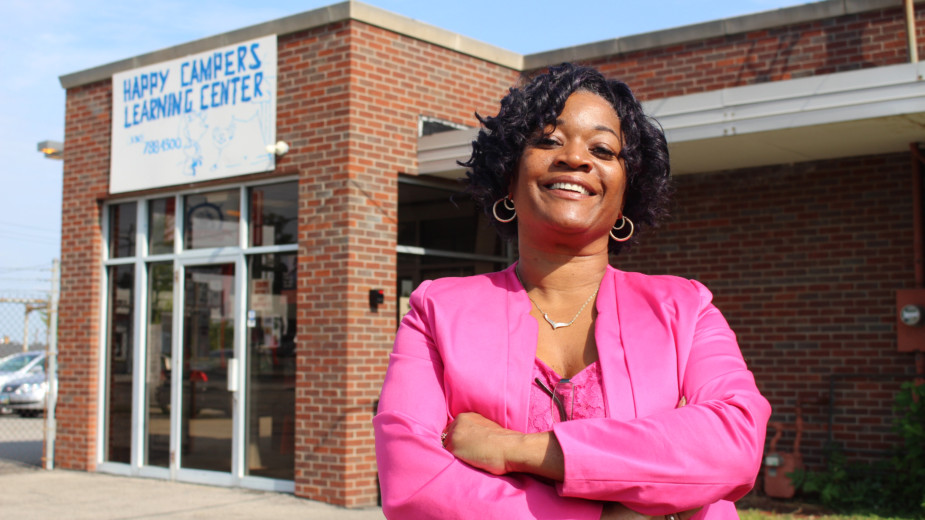Microloans Fill Gaps for Small Companies
YOUNGSTOWN, Ohio – For seven years, Tracy Jordan ran Happy Campers Learning Center out of her home. As her clientele grew and she faced the limit of what her Type B day care license allowed, she began looking for new space.
She settled on a site, the Bethlehem Lutheran Church on Midlothian Boulevard, but it needed a few renovations and she needed a way to cover some of her startup costs, including obtaining a higher-level license.
She went to a bank to apply for a loan and was refused. She went to other banks only to be refused again and again. She looked into credit unions and other funding sources through the Business & Investment Center at the Public Library of Youngstown & Mahoning County. There, she found out about a loan program at the Mahoning Valley Economic Development Corp.
The solution for Jordan, it turned out, was a microloan.
“I called for an appointment and the rest is history,” says Jordan.
“I didn’t have the best of credit. I didn’t have collateral. I was just starting out. I did everything they asked me to do and I qualified.”
The $25,000 loan helped her move into the church in 2009. She paid off her loan and things went well. Jordan’s business continued to expand to where, in 2013, she needed an even larger space, one that would also need some renovation.
Re-enter MVEDC, this time approving her for a $30,000 loan. With the financing, she moved into the day care’s current home on the corner of South and Indianola avenues.
Jordan’s story is a common one at the economic development agency. Businesses unable to secure loans from financial institutions, whether because of bad credit or the bank unwilling to lend small amounts, come to MVEDC.
The expense a bank incurs in administering such small loans makes them unprofitable even when applicants meet the other criteria.
Loans through the Small Business Administration’s Intermediary Lending Pilot program are capped at $50,000 and a bank must have denied the borrower, explains Teresa Miller, lending team leader for MVEDC.
“I consider microlending to be something a bank isn’t going to participate in because it’s small enough they say, ‘Sorry, we can’t lend that amount,’ ” she says.
“These smaller loans aren’t usually going toward a building. … It’s anything business-related – inventory, working capital, equipment.”
One of the smallest loans MVEDC has made, says Executive Director Mike Conway, was $500. A man, just out of prison, was working with Community Corrections Association. Banks wouldn’t touch him, Conway says.
“In that case, it was a man who was just paroled and working with CCA. He was a carpenter and just wanted some tools to get started,” he says. “That loan was paid off in a year. That’s the nature of that type of lending we do. We’re supporting small businesses at a level where they’re precarious.”
In Mercer County, Pa., the Shenango Valley Enterprise Zone offers loans up to $250,000 to fill the space between what a bank is willing to lend and what a business owner can pay. Most loans are between $50,000 and the maximum, says Executive Director Jim Cardamon.
“If you have a project and everything’s in line and you’re still coming up short, that’s where we step in,” he says. “That’s why 50% of the project has to be handled through private financing and a minimum of 10% cash from the applicant.”
The Mahoning Valley Economic Development Corp. has a similar 50-40-10 split.
The enterprise zone, created in 1985, covers portions of Sharon, Hermitage, Wheatland, Sharpsville, West Middlesex, Greenville and surrounding townships as well as the city of Farrell. Loans of more than $100,000 can fund only 50% of a project. Companies must also create at least one job within three years for every $30,000 lent.
At MVEDC, restrictions are set by the organization funding the loan, Conway explains.
The U.S. Department of Agriculture Intermediary Relending Program, for example, requires that borrowers live in areas Agriculture designates as “rural.”
The Ohio Development Services Agency’s Regional 166 Loan can be made only to those in the manufacturing, wholesale or distribution business.
With both organizations’ purpose being to help businesses expand, interest rates are competitive. MVEDC’s are usually between 6% and 7%, Miller says, while the Shenango Valley Enterprise Zones range from 60% of prime for equipment to 60% of prime plus half for real estate purchases.
“It’s probably better than what they’d get from a financial institution,” Cardamon says. “We take second place in the collateral line. We’re not vying for first place against banks.”
These types of loans, the three lenders agree, can be lifelines for small businesses. With the 50-40-10 split among bank, development agency and business, the savings can run in the thousands of dollars.
“That’s thousands of dollars staying with the business that can be used for other purposes, to hire people or get inventory or make more products,” Conway says. “That’s an impact on the success of the business.”
And in an area working to develop entrepreneurs and companies, any help is an advantage that helps businesses survive.
“We’re often overlooked. We don’t have the same capital as big businesses. A majority fail in the first two years,” Happy Campers’ Jordan says.
“I didn’t come from a rich background. I was a single mom with two daughters. … They took a chance with me. I’m happy that this type of opportunity is there for all of us.”
Pictured: To fund renovations, Tracy Jordan twice turned to microloans from Mahoning Valley Economic Development Corp.
Copyright 2024 The Business Journal, Youngstown, Ohio.


